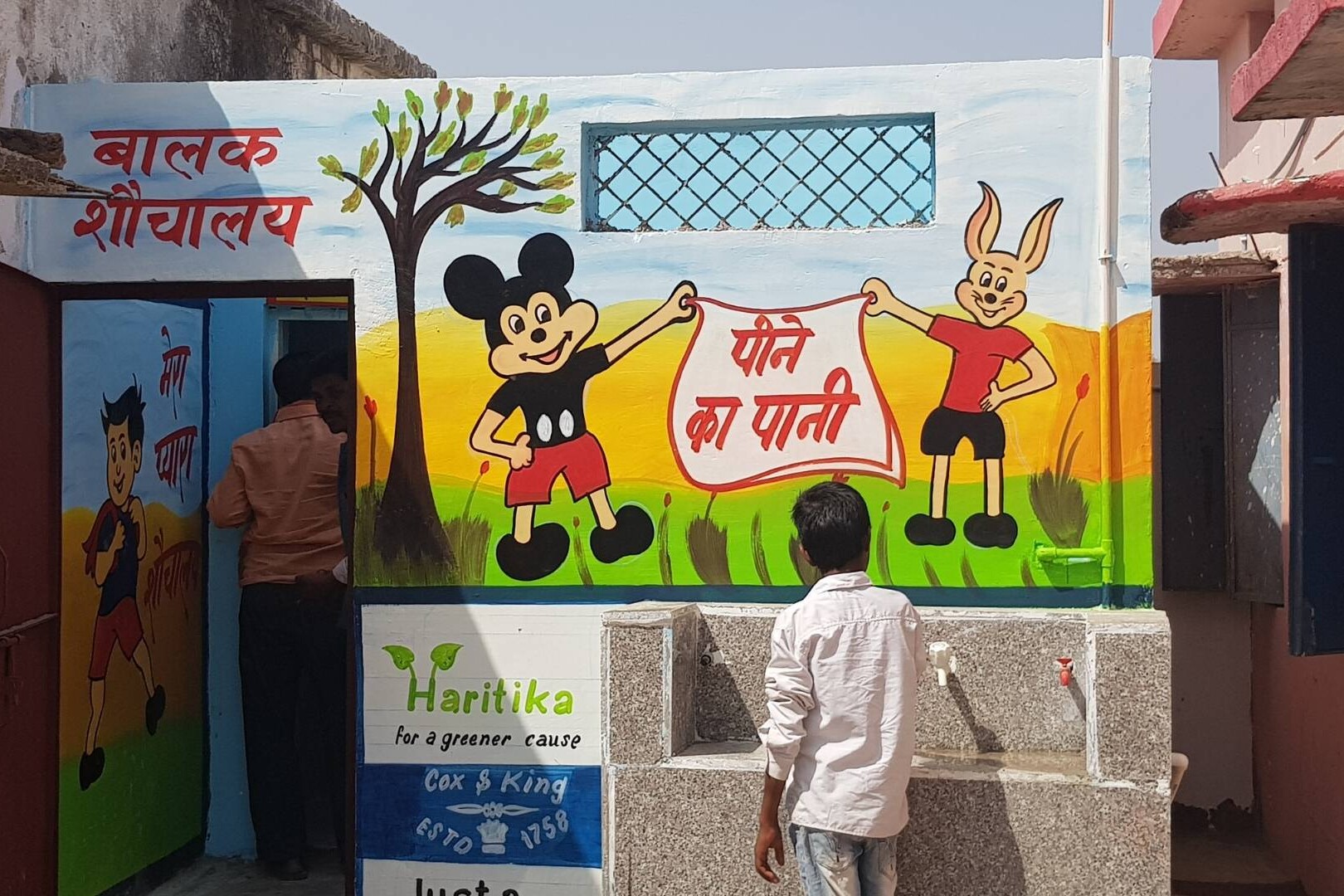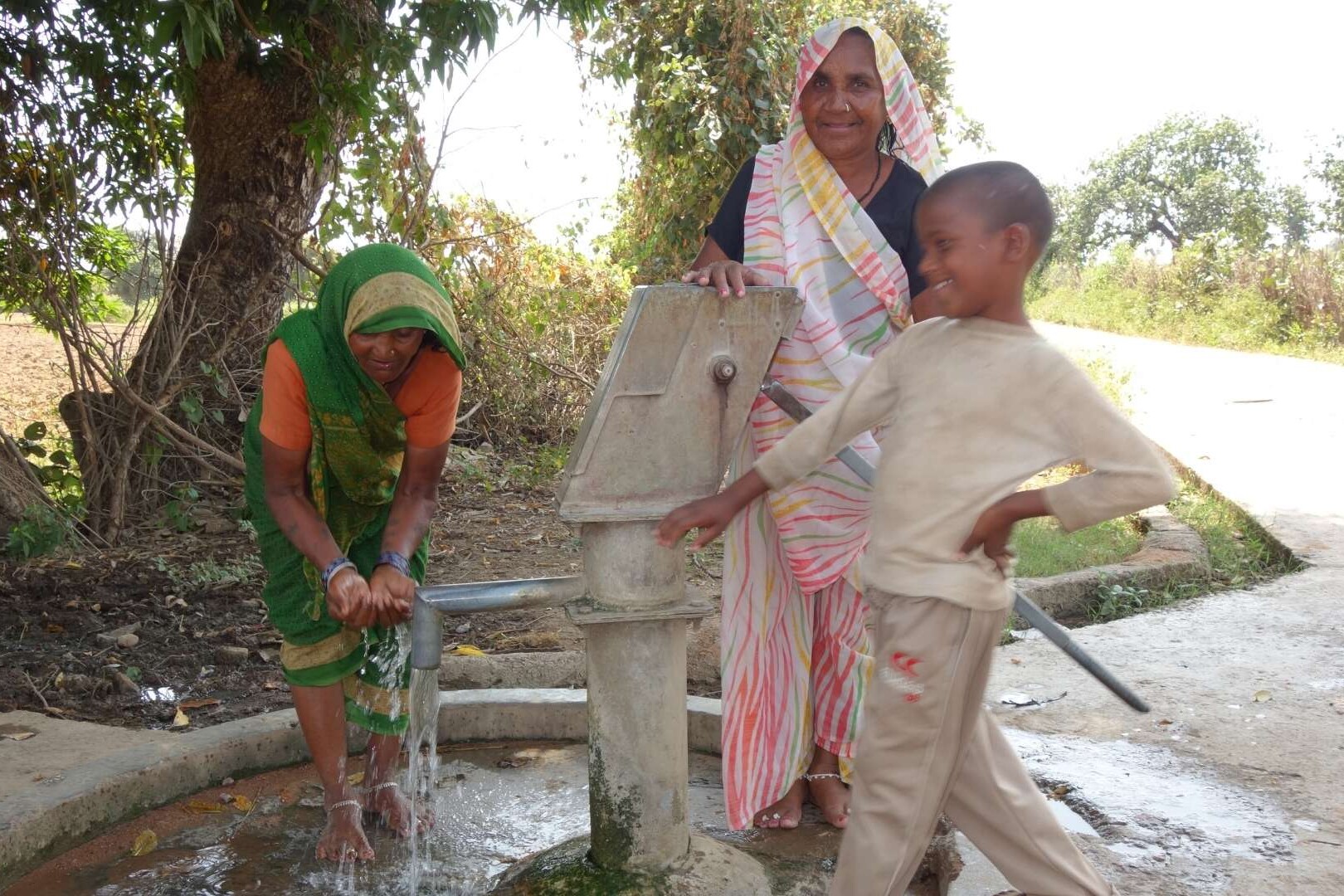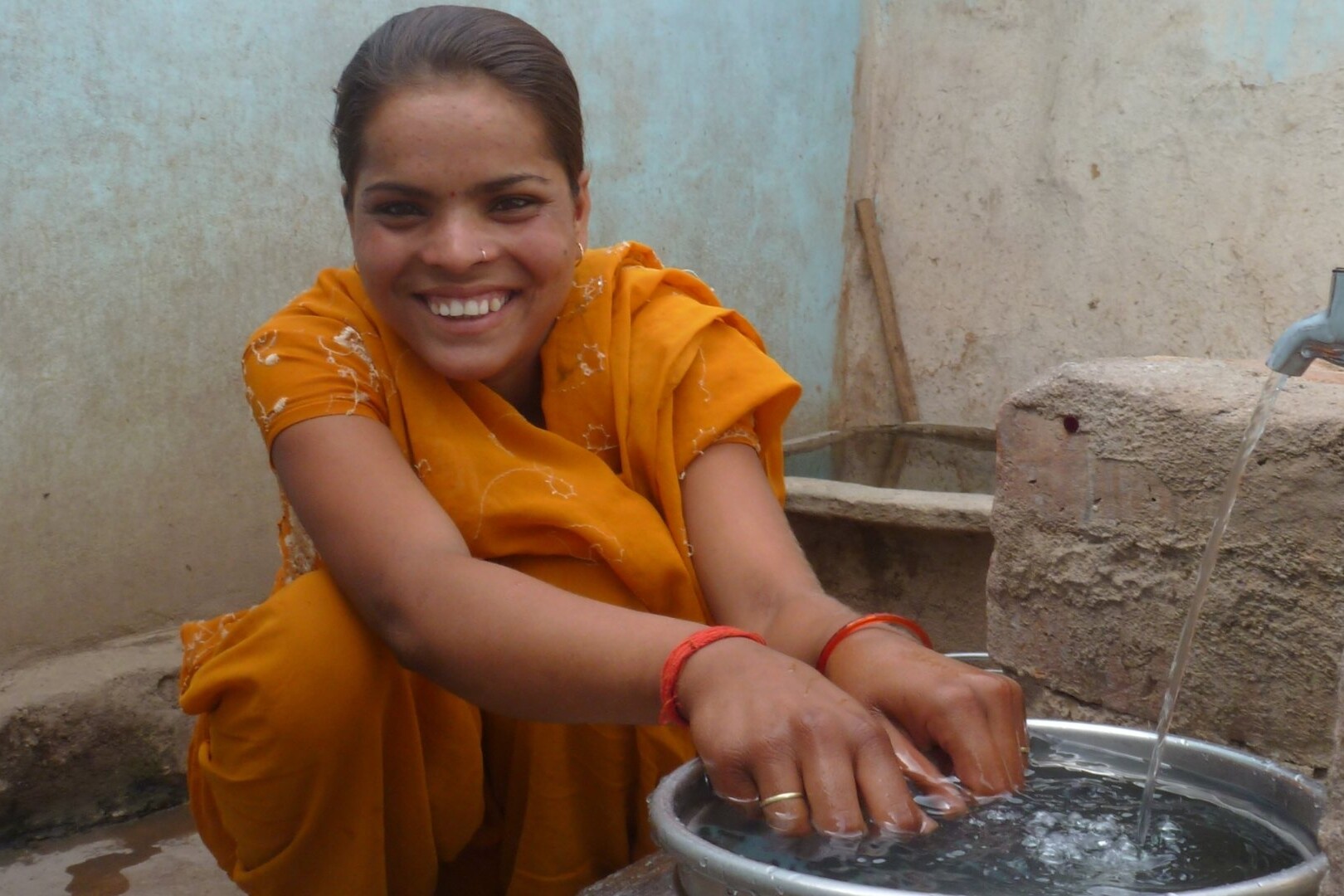7
%
of the population of India don’t have access to safe water, that’s 99 million people.
23
%
of the population of India don’t have access to sanitation, that’s 326 million people.
23
%
of the population of India don’t have access to basic hygiene facilities, that’s 326 million people.

Our Work in India
In Madhya Pradesh and Tamil Nadu we support rural villages with water supply and distribution systems.
The projects usually involve the construction of a drilled well and piped water system, which brings water to people’s homes, local schools, and Anganwadis (rural mother and child centres providing basic healthcare).
We also refurbish existing water sources so that residents can have sustainable access to safe water. Water User Committees are then trained to maintain the solutions so they can last for many years to come.
Primary school sanitation blocks are often also refurbished, or constructed, and provided with a water tank so that children can learn in a healthy and safe environment.

India Background
India is a nation of over 1.4 billion people, and is the largest country in the world in terms of population size. Growing numbers live without access to safe water and in particular, adequate sanitation, which has a huge impact on health; India is home to a third of the world’s malnourished and underweight children. Open defecation is widely practised due to inadequate sanitation, and 80% of India’s surface water is now contaminated and not fit for consumption.
About 750 million people live in rural areas and rely on a subsistence economy, with many living well below the Indian poverty line. In these rural areas, where Just a Drop works, communities mostly belong to “scheduled” castes and tribes, in separate hamlets on the periphery of main villages. Rural water and sanitation coverage is provided primarily to main habitations while outlying hamlets are either not covered or poorly covered.
WASH solutions in India must complement and support what the government is doing, and introduce benchmark standards, new, appropriate technology, and an understanding of good hygiene and sanitation practices.
